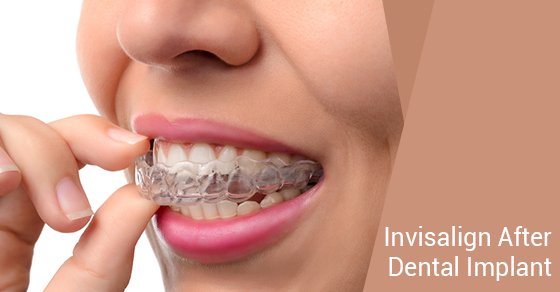Invisalign is an increasingly popular alternative to traditional or conventional braces given that it can straighten teeth and correct a variety of dental problems, like crowding and overbites, in a nearly invisible manner. It does this through the use of clear retainers. Not only will Invisalign give you the attractive smile that you’ve always wanted, but it will improve your self-esteem, confidence and also your physical health. Invisalign is comfortable and offers the additional convenience of only occasional dental visits.
Those who are considering Invisalign naturally have a lot of questions. We are here to answer one of those questions today so that you are free to move forward with your orthodontic experience.
Can Invisalign Be Used after a Dental Implant?
You might find yourself in the position of having had a dental implant but are now interested in Invisalign. So, is it possible to get Invisalign after a dental implant?
While every case is different, in general, the short answer to this question is that, yes, you can still be considered a candidate for Invisalign. Invisalign can also be used after someone has had bridges, crowns, and fillings as well. With that said, your treatment plan will likely involve a little bit of compromise, the reasons for which will be outlined below.
It is certainly preferable to get Invisalign first and proceed with a dental implant after teeth are in their final location. This is because implants cannot be moved into a different position because they are fixed to the bone – they are not like regular teeth. In short, while it is usually not ideal to get a dental implant before your teeth are moved into their desired position, it is certainly possible. It won’t affect your other teeth from being moved into their ideal position. If you find yourself in this situation, it is a good idea to discuss your desired outcomes with your orthodontist as you will have to consider the fact that your dental implant will not be moveable.
Keep in mind that there are certain cases where having a dental implant first won’t affect your ability to receive orthodontic treatment. For example, some may have a dental implant that does not actually involve the teeth that are being straightened with Invisalign (some may have a dental implant in the back of their mouth while they are only concerned with straightening their front teeth, for example).
The other case occurs when a dental implant is to be used as an anchor to help other teeth be moved to an ideal position. In fact, this is fairly common.
If you are interested in Invisalign, contact our team of professionals at Sierra Dental today for a great dental experience.
